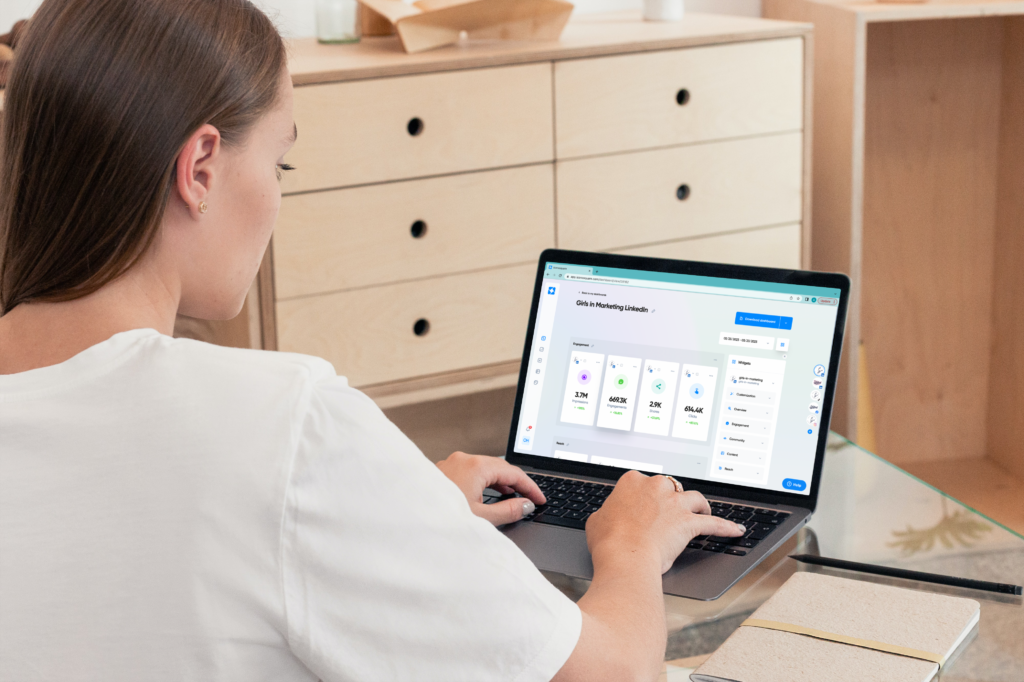Understanding which social media metrics are important for your business is key to any social media strategy.
Social media metrics can tell you a lot about much more than just your content. Tracking the right social media metrics gives you an insight into how your audience perceives your brand and an indication as to whether your social media strategy is supporting your overall marketing goals.
When considering which metrics you should be tracking on social media, it all comes down to your objectives. At Girls in Marketing, we use Iconosquare* to track all of our metrics in one place and create customised social media metrics dashboards that show us what we need to know at a glance.
We’ve made a list of some of the most important social media metrics to track, how to track them and what you can learn from them.
Follower growth
You may have heard people say that followers are a vanity metric to be ignored and that other metrics such as engagement and impressions are more worthy of your attention.
However, this isn’t necessarily the case and is very much dependent on your social media and marketing goals. An increase in followers is an indication of increased brand awareness. So, if this is something that you are aiming to achieve through your marketing strategy, follower growth is a good metric to pay attention to.
As well as brand awareness, follower growth can also be a great opportunity for brands to build and nurture a community. Turn your growing followers into loyal and engaged members of a community to build brand trust and engagement.
Follower growth can be measured by checking in on your follower numbers at regular intervals and the best way to do this is by using a social media management tool.
By using a tool to track this metric, other factors such as follower churn will also be considered. The number of unfollows are equally interesting to understand as this can help give you an idea of whether your content is resonating with your audience or whether they are becoming disengaged and choosing to unfollow your brand.
Using Iconosquare*, you can see which days you gain or lose most followers and which specific pieces of content may have directly impacted these figures. This, in turn, can help you plan your future social media content.
Social media engagement
Although having a large following can be great for building community and brand awareness, it’s important that your followers are actually engaging with your content.
Engagement demonstrates that your audience finds value in your content and that that type of content you are producing is working well. Depending on the social media platform, engagement can include likes, comments, shares and saves.
Each type of engagement metric can tell you something different about how your audience perceives your content and can help to inform your future content strategy.
For example, if your content receives a lot of saves, it may mean that this type of content is particularly valuable and you should produce more to ensure you are fulfilling a knowledge gap or other need.
Did you know that TikTok is the most successful platform in encouraging users to engage with content? If you’re hoping to increase your engagement rates on social media, it may be worth focusing on TikTok as a channel and considering how to increase your engagement on the platform.
Remember, engagement should not be observed in isolation. It should always be considered in relation to the type of content you have been producing and any recent changes to your strategy.
Social media impressions
Social media impressions tell you how many social media users were exposed to your content, whether they are followers of your account or not.
Impressions are a particularly important metric when measuring the success of your paid social media ad spend. This metric can be useful in helping you to understand which types of content generally get most exposure on social media. This can, in turn, help to inform where and how you spend future social media ad budget.
Different social media platforms measure impressions slightly differently. In order to avoid relying on the in-built reporting in each platform, it can be useful to use an all-in-one social media management tool to help aggregate this information and standardise the way that you interpret and report on your social media metrics.
Lead generation
Although not a typical social media metric, lead generation is an important metric to track. Inevitably, your business will have marketing goals beyond growing your social media following and these goals can look different for every brand.
Lead generation for your business could mean website traffic, sales leads, event attendees, or another metric. By creating targeted, engaging content that attracts the correct audience, social media can help you achieve these goals.
For example, if your goal is to increase visitors to specific pages on your website, it’s important to understand how to create content that will drive traffic to your website.
How to measure and report on social media metrics
Keeping on top of all of your social media metrics can be a lot of work if you manage them in isolation. Instead of tracking metrics through individual social media platforms, social media management tools are a great way to keep track of your social media marketing performance.
Using a social media management tool with great in-built reporting features also helps to minimise your workload when creating reports for management and the rest of the marketing team.
Try a free 14-day trial of Iconosquare* to get access to all of the measuring and reporting features and use the code GIM20 for 20% off any plan!
*AD | This blog is part of a paid partnership with Iconosquare






